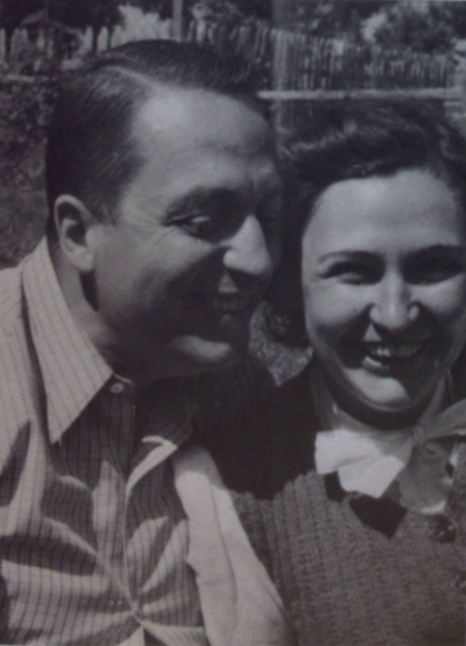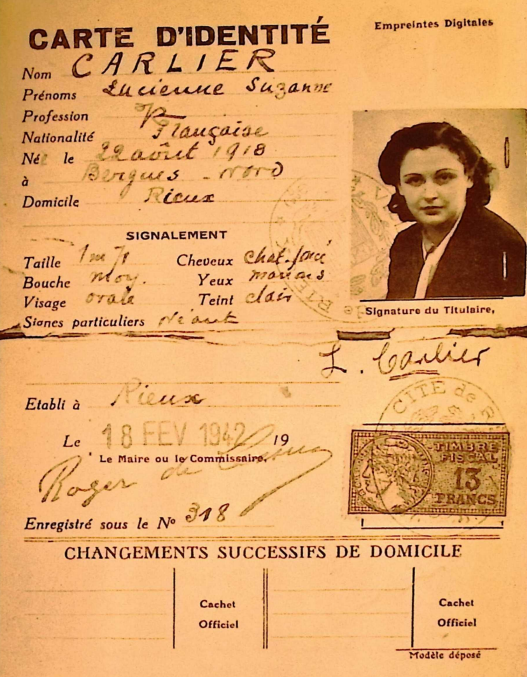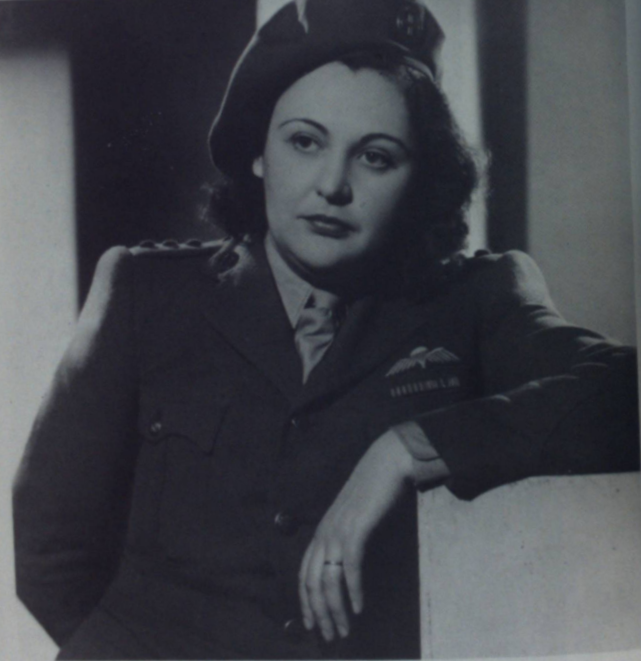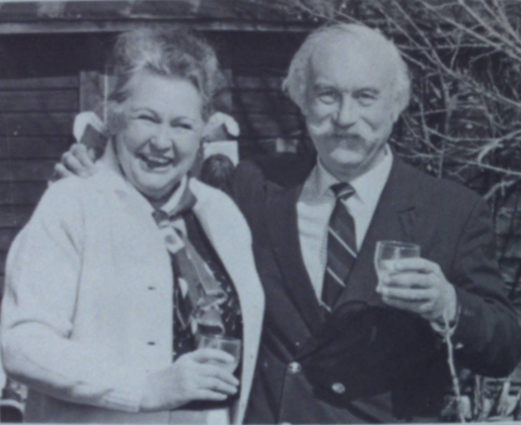International Women's Day 2024
Nancy Wake
“If I ever had the chance, I would do anything, however big or small, stupid or dangerous, to try and make things more difficult for their rotten party."
[Nancy Wake, The White Mouse, p.4]
Nancy Grace Augusta Wake was born in 1912, in Wellington, New Zealand. Her family moved to Australia in 1914, the same year her father left his wife and six children. During the years that followed, the family endured many hardships and poverty. At the young age of 16, Nancy decided to become a nurse, she left Sydney and moved to London.[1] After a while, she moved to France where she found work as a journalist.[2] Nancy started to write for several newspapers and publishing companies in Paris, and she encountered a variety of people, some of them will help her in the future.[3]
In 1935, Nancy visited Vienna and Berlin, where anti-Semitism and the Nazis’ persecution of Jews prevailed by then. While she visited Vienna, she witnessed how the Nazis attacked Jews and killed them on the street. Nancy couldn’t stand it and she decided to do anything in her power to oppose the Nazi regime.[4] [5]
In 1937 Nancy met Henri Fiocca, a rich industrialist in France. The couple married two years later in Marseille. At that time, Nancy joined the French Resistance, and very quickly became an integral part of the operational missions, while using her acquaintances and her journalist status.[6]

Nancy Wake, The White Mouse, (Sydney: Pan Macmillan Australia, 1987).
In 1940, when the Germans invaded France, Nancy's acquaintances helped her in co-operating with several Resistance organizations. She managed to smuggle Jews and British soldiers in an ambulance she had. Those survived the Nazi attacks, across the border to Spain.[7] [8] Nancy continued her work in the Resistance for a year and managed to save numerous British pilots. The Gestapo started to suspect the Resistance inference, and the woman they had nicknamed ‘the White Mouse’. They even promised a 5 million Francs reward to the person who catches her. Ignoring these major life threats, Nancy continued her work in the Resistance.[9]
In 1942 the Gestapo discovered Nancy’s identity, and they worked hard to locate her. Nancy decided to leave the country, and after several attempts, she escaped to Spain. After she left France, the Gestapo captured her husband, Henri Although he was questioned and tortured, he never revealed Nancy’s location. He remained silent until the Gestapo decided to execute him.[10] Nancy tells in her autobiography:
“In the middle of October, I had a terrible nightmare and woke up convinced Henri is dead. Micheline and another friend were staying with me at that time. I woke them up and told them my fears. They both pointed out that it was foolish to allow a nightmare to upset me in this manner but the doubt I had in my mind continued for days, until at last, I thought I was being unrealistic.”.[11] Only after the war Nancy discovered that at the same time she had that terrible dream, her husband was murdered by the Gestapo.[12]

Russel Braddon, Nancy Wake : The Story of a Very Brave Woman (London: Book Club, 1956).
In 1943 Nancy moved to England and started working with the Special Operations Executive (SOE). She was trained in survival skills, silent killing, code deciphering, radio operation, night parachuting, and operating multiple weapons. Her instructors and fellow members described her as a woman with extraordinary courage, resolve, and willpower. After she finished her training, her goal was to be sent to the field.[13]
In 1944, Nancy got her chance. She was requested to parachute at night into France territory with 39 women and 430 men to help the French Resistance prepare for D-Day.[14] Nancy operated as the contact between the French Resistance and the British who provided them with food and supply. The Resistance members were a big threat to the Nazis, they were more than 7,000 soldiers, who faced the German threat of 22,000 Nazis.[15] [16]
On one occasion, one of the main communication devices was damaged, and the French Resistance could not contact the British Forces that provided food and ammunition. Nancy decided to travel to the nearest operating communication device and inform the British Forces about the Resistance's location. She believed that it would be easier for a woman to travel through German checkpoints. She traveled on her bicycle for 71 hours, about 500 kilometers with only a little rest, so she could deliver the information as soon as possible, endangering herself at any encounter with the Nazis.[17] [18]

Nancy Wake, The White Mouse, (Sydney: Pan Macmillan Australia, 1987).
After the liberation in August 1944, Nancy and Resistance companions returned to Paris.[19] Throughout the war Nancy saved more than 10,000 Jews and British pilots.[20]
After the end of the war, Nancy was rewarded with many awards and medals for her actions: The George Medal from Britain, the Médaille de la Résistance from France, the Medal of Freedom from the United States, and many more.[21] Nancy started to work in the British Air Ministry and was posted in the British Embassy in Paris and Prague.[22] In 1957, Nancy remarried to a Royal Air Force Officer and decided to retire from military service.[23]

Nancy Wake, The White Mouse, (Sydney: Pan Macmillan Australia, 1987).
In 1985 Nancy published her autobiography The White Mouse.[24]
Nancy Wake passed away at the age of 98 in Kingston Hospital in England.[25]
"On the whole, I have led an interesting life."
[Nancy Wake, The White Mouse, p. 200]
Nancy Wake, The White Mouse, (Sydney: Pan Macmillan Australia, 1987).
[1] Raymond, Jennings. Holocaust Saviours: True Stories of Rescuers That Save Holocaust Refugees. 2nd edition (Place of publication not identified: Publisher not identified, 2015) pp. 2-3.
[3] Raymond, Jennings. Holocaust Saviours: True Stories of Rescuers That Save Holocaust Refugees. p. 3.
[4] Ibid, pp. 4-5.
[6] Raymond, Jennings. Holocaust Saviours: True Stories of Rescuers That Save Holocaust Refugees. p. 4.
[8] Raymond, Jennings. Holocaust Saviours: True Stories of Rescuers That Save Holocaust Refugees. pp. 4-5.
[9] Ibid, p. 5.
[10] Ibid, p. 5.
[11] Nancy, Wake, The White Mouse, (Sydney: Pan Macmillan Australia, 1987), pp. 101-102.
[12] Ibid, p. 154.
[15] Raymond, Jennings. Holocaust Saviours: True Stories of Rescuers That Save Holocaust Refugees. pp. 6-7.
[17] Raymond, Jennings. Holocaust Saviours: True Stories of Rescuers That Save Holocaust Refugees. p. 8.
[20] Raymond, Jennings. Holocaust Saviours: True Stories of Rescuers That Save Holocaust Refugees. p. 7.
[21] Ibid, p. 8.
[22] Ibid, p. 9.
[23] Ibid, p. 9.






